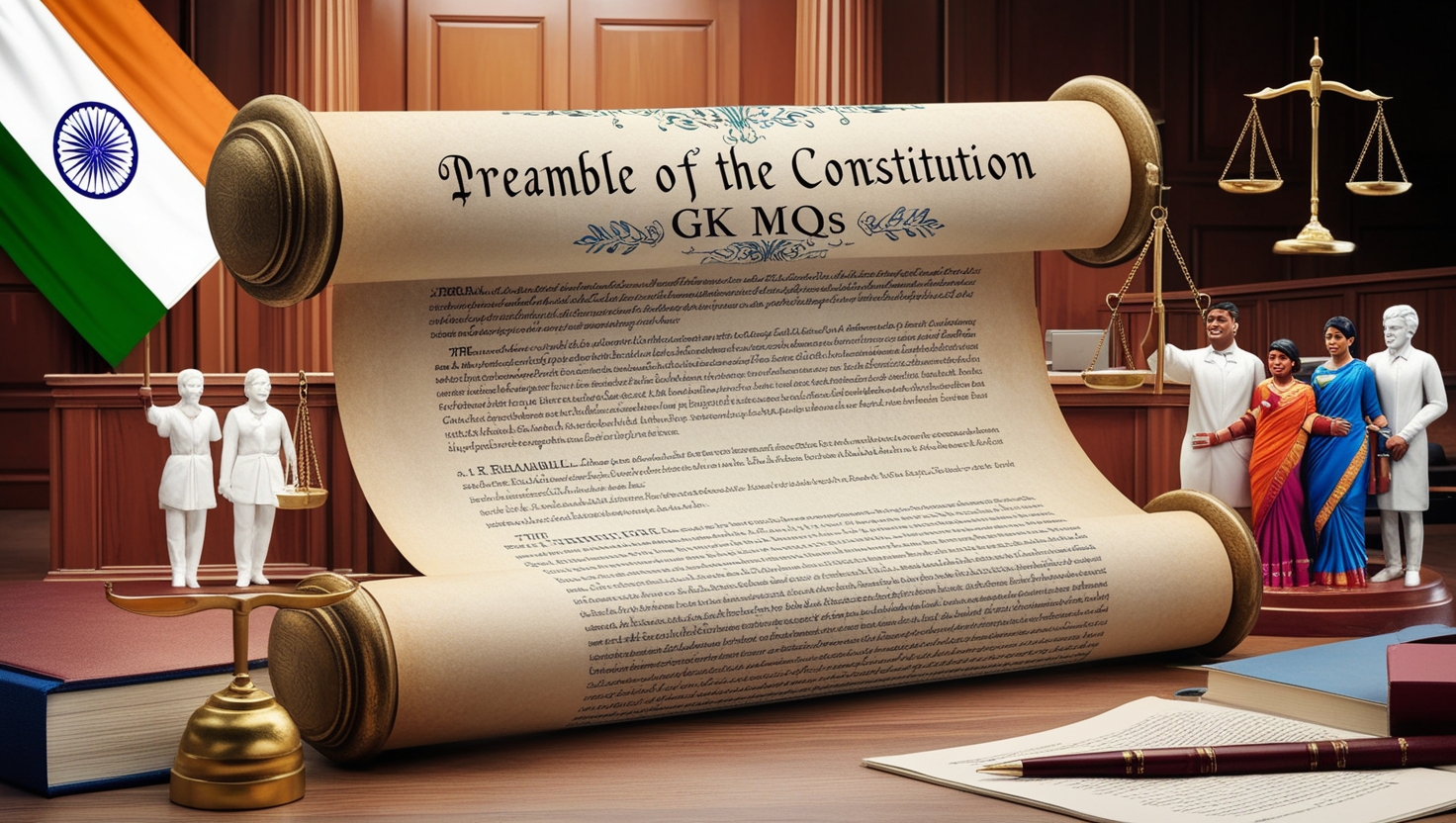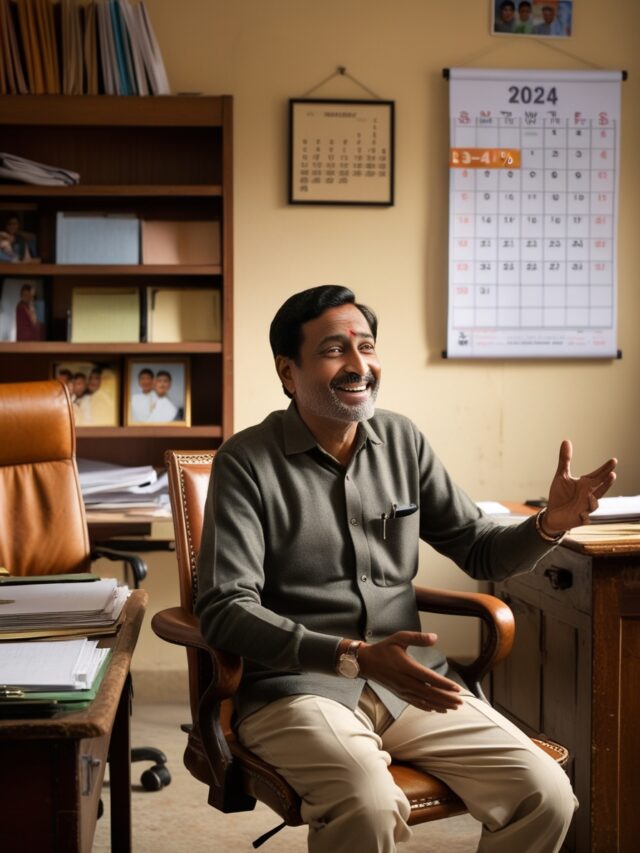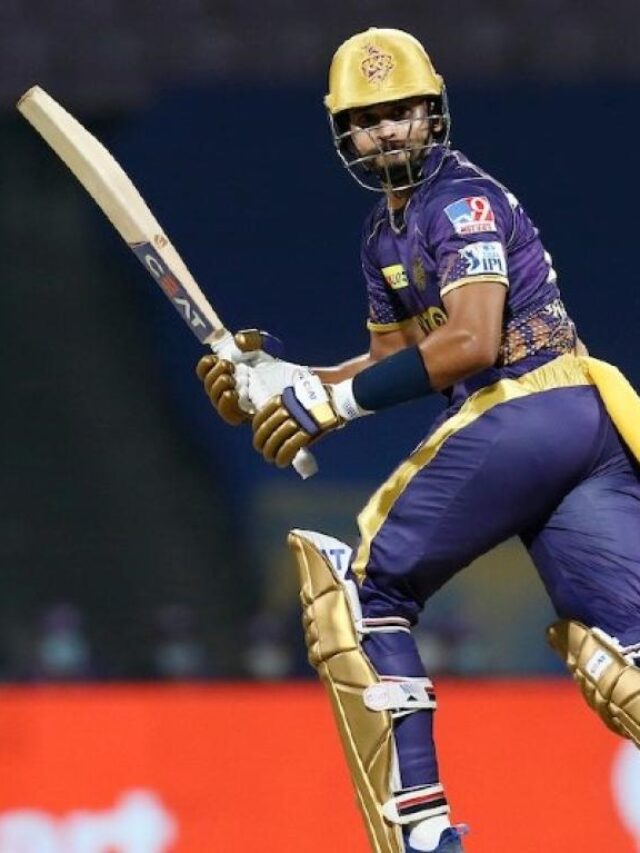
1. Which of the following words is not included in the Preamble of the Constitution of India?
- Equality
- Liberty
- Sanctity
- Justice
Show Answer
Answer: Sanctity
The Preamble of the Constitution of India consists of several key words, including Sovereign, Socialist, Secular, Democratic Republic, Justice, Liberty, Equality, and Fraternity. Notably, the word “Sanctity” is not a part of the Preamble.
2. Till now, the Preamble of the Constitution of India has been amended for how many times?
- Never
- Once
- Twice
- Thrice
Show Answer
Answer: Once
The Preamble of the Constitution of India underwent only one amendment, which occurred through the 42nd Constitution Amendment Act in 1976. During this amendment, the words Secular, Socialist, and Integrity were added to the Preamble.
3. The language and ideals of the Preamble of the Constitution of India are influenced/borrowed from which of the following constitution(s)?
1. Australia
2. France
3. USA
Select the correct option:
- Only 1 & 2
- Only 2 & 3
- Only 1 & 3
- 1, 2 & 3
Show Answer
Answer: Only 1 & 2
The language of the Preamble of the Indian Constitution draws inspiration from the Constitution of Australia, while the ideals of Liberty, Equality, and Fraternity are derived from the French Constitution. These ideals have their roots in the French Revolution of 1789.
4. The ideals of liberty, equality, and fraternity in the Preamble are borrowed from the Constitution of which country?
- French Constitution
- Australian Constitution
- British Constitution
- USSR Constitution
Show Answer
Answer: French Constitution
The ideals of liberty, equality, and fraternity in the Preamble of the Constitution of India are borrowed from the French Constitution. These ideals were born during the French Revolution of 1789.
5. The constitution of India derives its ultimate authority from?
- Supreme Court of India
- Parliament of India
- People of India
- Constituent Assembly of India
Show Answer
Answer: People of India
The Constitution of India derives its ultimate authority from the people of India. The Preamble begins with “We, the people of India,” signifying that the constitution is created by and for the Indian people.
6. In which case, did the Supreme Court hold that the Preamble is an integral part of the constitution in 1995?
- Union Government vs LIC of India
- Kesavananda Bharti Case
- Ashok Kumar Thakur Case
- MC Mehta Case
Show Answer
Answer: Union Government vs LIC of India
In the S.R. Bommai vs Union Of India (1994) case, the Supreme Court of India affirmed that the Preamble is an integral part of the Constitution. It serves to define the fundamental features and objectives of the Constitution.
7. How many times does the word “Secular” appear in our constitution?
- 1
- 2
- 3
- 4
Show Answer
Answer: 2
The term “secular” is mentioned twice in the Indian Constitution, appearing in both the Preamble and Article 25(a).
8. Who called the Preamble the Political Horoscope of Indian Constitution?
- Thakurdas Bhargava
- N. A. Palkhivala
- K. M. Munshi
- Jawaharlal Nehru
Show Answer
Answer: K. M. Munshi
K. M. Munshi, a member of the Drafting Committee of the Constituent Assembly, referred to the Preamble as the “Horoscope of our sovereign democratic republic.”
9. What was the Constitutional status of India when the Constitution of India came into force on 26th January 1950?
- A Secular Republic
- A Socialist Secular Democratic Republic
- A Sovereign Democratic Republic
- A Sovereign Socialist Secular Democratic Republic
Show Answer
Answer: A Sovereign Democratic Republic
When the Constitution of India came into force on January 26, 1950, the constitutional status of India was established as a “Sovereign Democratic Republic.”
10. Who called the Preamble the identity card of the Constitution?
- Dr. B. R. Ambedkar
- Mahatma Gandhi
- N. K. Palkhivala
- Dr. Rajendra Prasad
Show Answer
Answer: N. K. Palkhivala
N. K. Palkhivala, an eminent jurist and constitutional expert, regarded the Preamble as the “identity card of the Constitution.” He was known for his expertise in constitutional law and government finance.
Q11: Which of the following depicts the correct sequence in the context of the Preamble of the Constitution of India?
1. Democratic – Secular – Sovereign Republic – Socialist
2. Sovereign- Socialist – Democratic Republic – Secular
3. Sovereign – Socialist – Democratic -Secular – Republic
4. Sovereign- Socialist – Secular Democratic – Republic
Show Answer
Answer: 2
Explanation: The Preamble’s correct sequence is We, THE PEOPLE OF INDIA, having solemnly resolved to constitute India into a SOVEREIGN SOCIALIST SECULAR DEMOCRATIC REPUBLIC.
Q12: Preamble of the Indian Constitution is based on which of the following previous documents/Laws?
1. Nehru Report
2. Objectives Resolution
3. Government of India Act, 1935
4. Indian Independence Act, 1947
Show Answer
Answer: 2
Explanation: The Preamble to the Constitution of India is based on the ‘Objectives Resolution,’ which was drafted and moved by Pandit Nehru and adopted by the Constituent Assembly. It was moved on December 1946.
Q13: Which of the following is not a correct statement with respect to the Preamble of the Indian Constitution?
1. Preamble is enforceable in the court of law
2. It depicts the nature of the Indian States
3. It defines the objective of the Constitution.
4. It mentions the date of adoption of the Constitution
Show Answer
Answer: 1
Explanation: The Preamble of the Constitution underlies four ingredients. It reveals the source of authority of the Constitution, describes the nature of the Indian state, defines the objectives of the Constitution of India, and mentions the date of adoption of the Constitution. However, the Preamble is not enforceable in the court of law, meaning it is not justiciable.
Q14: Which of the following forms of justice is not mentioned in the Preamble of the Constitution of India?
1. Social
2. Economic
3. Religious
4. Political
Show Answer
Answer: 3
Explanation: The Preamble mentions three forms of justice: Social, Economic, and Political, but does not include a reference to religious justice.
Q15: Which of the following forms of liberty is not mentioned in the Preamble of the Constitution of India?
1. Liberty of thought
2. Liberty of belief
3. Economic liberty
4. Liberty of faith and worship
Show Answer
Answer: 3
Explanation: The Preamble of the Constitution of India talks about five forms of liberty: Liberty of thought, expression, belief, faith, and worship. However, economic liberty is not mentioned in the Preamble.
Q16: In which judgment did the Supreme Court hold that the Preamble is not part of the Constitution?
1. Berubari Union Case
2. Kesavananda Bharti Case
3. LIC of India Case
4. Golaknath Case
Show Answer
Answer: 1
Explanation: In the Berubari Union Case, the Supreme Court of India delivered a judgment in 1960, stating that the Preamble is not an integral part of the Constitution of India. However, this interpretation was later revisited and overruled in subsequent cases.
Q17: Which of the following statements is/are correct about the term ‘Equality’ mentioned in the Preamble of the Constitution of India?
1. The preamble to the Constitution of India secures for all its citizens equality of status and opportunity.
2. This provision embraces three dimensions of equality: civic, political, and economic equality.
Choose the correct option:
1. Only 1
2. Only 2
3. Only 1 & 2
4. Neither 1 nor 2
Show Answer
Answer: 3
Explanation: In the landmark Kesavananda Bharti Case, the Supreme Court held that the Preamble can be amended, subject to the condition that no amendments are made to the basic features of the Constitution of India. This case established the doctrine of the basic structure, which protects certain fundamental elements of the Constitution from being altered.
Q18: Who said the following words about the Preamble of the Indian Constitution? The Preamble is the most precious part of the Constitution. It is the Soul of the Constitution. It is the key to the Constitution. It is a jewel set in the Constitution. It is a proper yardstick with which one can measure the worth of the constitution.
1. Sir Alladi Krishnaswami Iyer
2. Jawaharlal Nehru
3. Pandit Thakur Das Bhargava
4. K. M. Munshi
Show Answer
Answer: 3
Explanation: Pandit Thakur Das Bhargava, who was also a member of the Constituent Assembly, said these words about the Preamble of the Indian Constitution.
Q19: Which of the following statements is/are correct regarding the concept of equality and liberty enshrined in the Preamble of the Constitution of India?
1. Liberty and equality are concepts that go hand in hand.
2. Without equality, liberty will lead to the supremacy of the few over many. And equality without liberty would stifle individual initiative.
Choose the correct option:
1. Only 1
2. Only 2
3. Both 1 & 2
4. Neither 1 nor 2
Show Answer
Answer: 3
Explanation: The statement that Liberty and equality are concepts that go hand in hand. Without equality, liberty will lead to the supremacy of the few over many. And equality without liberty would stifle individual initiative underscores the interdependence of liberty and equality in a democratic society, highlighting that both are essential to prevent the concentration of power and promote individual freedom and opportunity.







